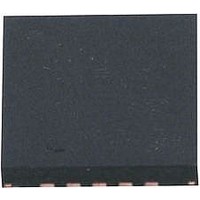LTC5540IUH#PBF Linear Technology, LTC5540IUH#PBF Datasheet - Page 11

LTC5540IUH#PBF
Manufacturer Part Number
LTC5540IUH#PBF
Description
IC, DOWN CONVERTING MIXER 1.3GHZ, QFN-20
Manufacturer
Linear Technology
Datasheet
1.LTC5540IUHPBF.pdf
(16 pages)
Specifications of LTC5540IUH#PBF
Frequency Range
600MHz To 1.3GHz
Supply Voltage Range
3.1V To 3.5V
Rf Ic Case Style
QFN
No. Of Pins
20
Operating Temperature Range
-40°C To +85°C
Rf Type
GSM, LTE, WCDMA, WiMax
Operating Supply Voltage
3.3V
Operating Temperature (min)
-40C
Operating Temperature (max)
85C
Operating Temperature Classification
Industrial
Lead Free Status / RoHS Status
Lead free / RoHS Compliant
Lead Free Status / RoHS Status
Lead free / RoHS Compliant
Available stocks
Company
Part Number
Manufacturer
Quantity
Price
applicaTions inForMaTion
The RF input impedance and input reflection coefficient,
versus RF frequency, is listed in Table 1. The reference
plane for this data is pin 2 of the IC, with no external
matching, and the LO is driven at 1090MHz.
Table 1. RF Input Impedance and S11
(at Pin 2, No External Matching, LO Input Driven at 1090MHz)
LO Inputs
The mixer’s LO input circuit, shown in Figure 5, consists
of an integrated SPDT switch, a balun transformer, and
a two-stage high-speed limiting differential amplifier to
drive the mixer core. The LTC5540’s LO amplifiers are
optimized for the 0.7GHz to 1.2GHz LO frequency range.
LO frequencies above or below this frequency range may
be used with degraded performance.
(GHz)
0.4
0.5
0.6
0.7
0.8
0.9
1.0
1.1
1.2
1.3
1.4
RF
7
MIXER
LOBIAS
TO
LTC5540
BIAS
6
Figure 5. LO Input Schematic
IMPEDANCE
14.7 + j19.7
18.1 + j24.4
23.1 + j27.7
29.9 + j30.6
39.0 + j32.9
52.8 + j31.7
67.3 + j15.4
55.2 – j13.4
36.2 – j11.2
31.2 – j4.8
29.8 – j0.2
RF INPUT
LO BUFFER
4mA
V
CC2
8
V
CC1
9
MAG
0.6
0.6
0.5
0.4
0.4
0.3
0.2
0.1
0.2
0.2
0.3
LOSEL
5540 F05
V
S11
LO2
LO1
CC3
14
11
15
C4
C3
ANGLE
–133.5
–162.4
–179.2
133.8
122.9
113.4
102.3
–61.4
88.2
67.8
34.3
LO2
LO1
IN
IN
The LO switch is designed for high isolation and fast
(<50ns) switching. This allows the use of two active
synthesizers in frequency-hopping applications. If only
one synthesizer is used, then the unused LO input may
be grounded. The LO switch is powered by V
and controlled by the LOSEL logic input (Pin 9). The LO1
and LO2 inputs are always 50Ω-matched when V
applied to the chip, even when the chip is shutdown. The
DC resistance of the selected LO input is approximately
23Ω and the unselected input is approximately 50Ω. A
logic table for the LO switch is shown in Table 2. Measured
LO input return loss is shown in Figure 6.
Table 2. LO Switch Logic Table
The LO amplifiers are powered by V
and pin 6). When the chip is enabled (SHDN = low), the
internal bias circuit provides a regulated 4mA current to the
amplifier’s bias input, which in turn causes the amplifiers
to draw approximately 80mA of DC current. This 4mA
reference is also connected to LOBIAS (Pin 7) to allow
modification of the amplifier’s DC bias current for special
applications. The recommended application circuits require
no LO amplifier bias modification, so this pin should be
left open-circuited.
–10
–15
–20
–25
–30
–5
LOSEL
High
0
Low
500
C3 = C4 = 100pF
Figure 6. LO Input Return loss
600 700
FREQUENCY (MHz)
800 900
OR SHUTDOWN
NOT SELECTED
SELECTED
1000 1100
ACTIVE LO INPUT
CC1
1200
LTC5540
5540 F06
and V
LO1
LO2
1300
CC3
CC2
(Pin 14)
(pin 8
CC
5540f
is









